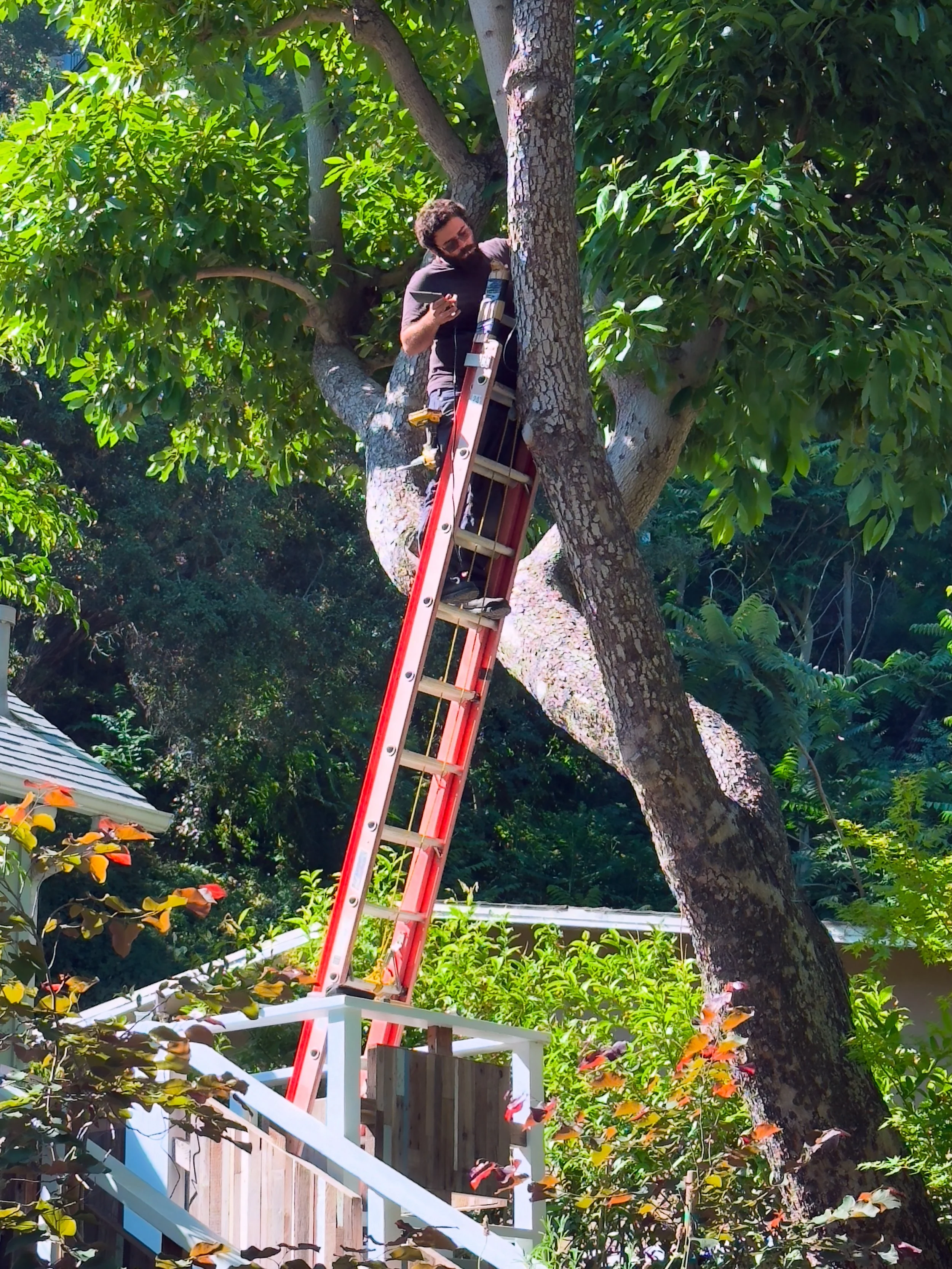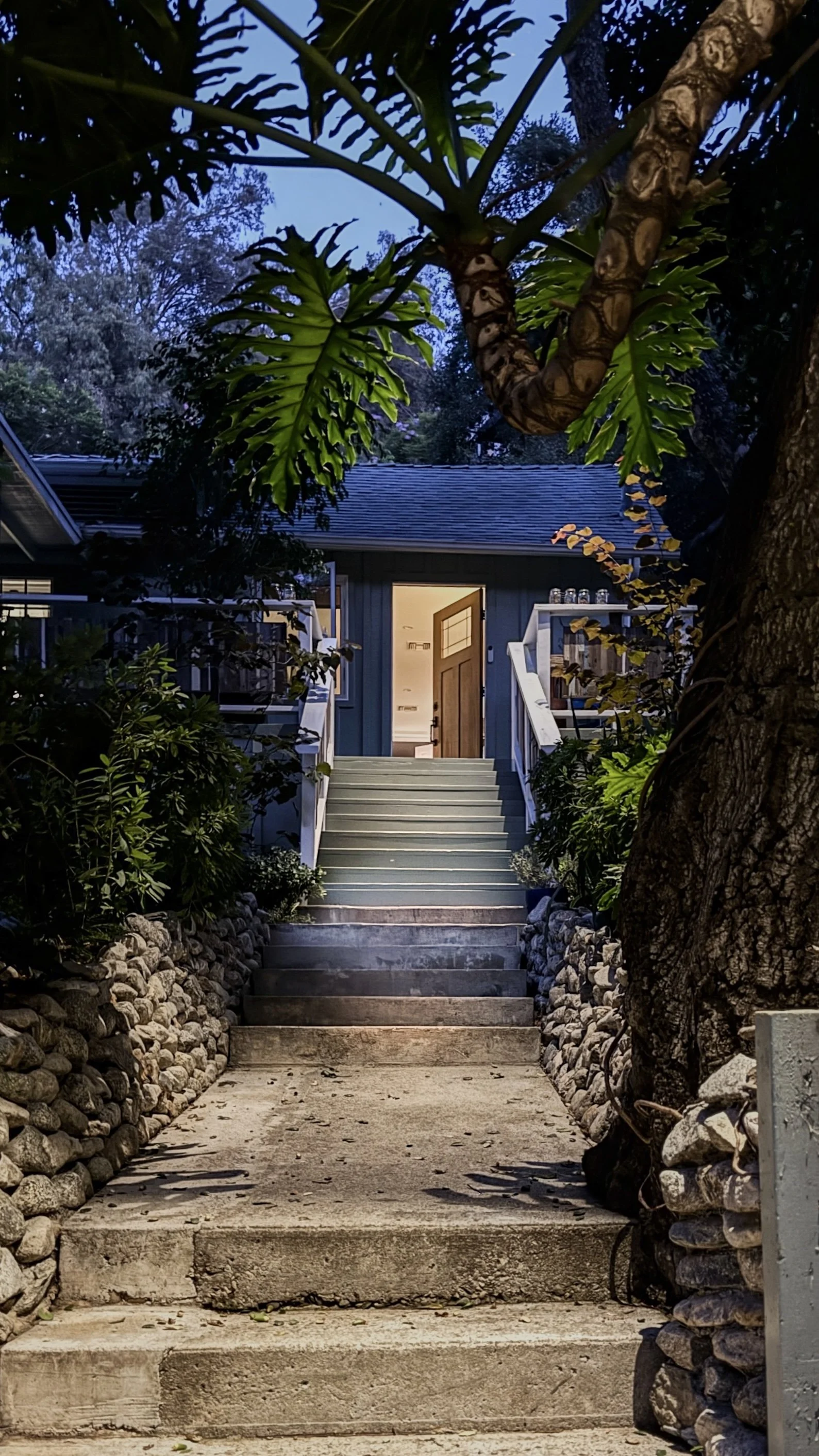Step This Way:
The Subtle Art of Lighting Steps
Downlit steps in Laurel Canyon, safely guiding each stride without calling attention to the source.
Taking The First Step
There’s a rhythm to descending steps. A quiet choreography between muscle memory and instinct. We rarely think about it until we miss one. That’s when lighting becomes more than design. It becomes a quiet form of protection.
Why Step Lighting Matters Most on the Way Down
Most people assume stairs need to be lit for the climb up, but real safety lives in the descent. Especially after two glasses of wine and a good laugh! The eye relies on consistency. The body relies on rhythm. And both can be thrown off when a landing shifts the pace or a tread suddenly widens.
That moment when the steps transition to a landing? That’s where your balance recalibrates, your stride adjusts, and where many an unsuspecting guest has done a cartwheel down the rest of the flight. Step lighting, done right, removes uncertainty. It gives your eyes a rhythm to follow and your feet a path they can trust.
Lighting from Above, Not from the Riser
We prefer to light steps from above. Often from a tree, an eave or a wall-mounted fixture that spills light downward. This creates a natural pattern of light and shadow across the treads. It feels organic. It respects the architecture. It protects without distracting.
Compare that to steplights cut into every riser. Uniform. Glaring. Like airport runway lights. They may serve the function, but they lack the soul. They reduce a welcoming staircase to an industrial corridor.
Why No Pathlights?
Early in my career, I used pathlights to illuminate garden steps and walkways. But not long after installation, they’d become casualties of daily life. Bumped by gardeners, tangled in hoses, or knocked askew, I was constantly resetting them.
A client once ordered me to “straighten out your drunken soldiers,” and the phrase stuck with me. It made me rethink everything.
Since then, I’ve searched for better, cleaner, and frankly, more clever ways to light steps and paths. Today, we use trees as natural platforms for downlights. And where there are no trees, we use camouflaged davit arms tucked into hedges or shrubs. Pathlights are used sparingly and only where no other options are available.
No pathlight, no matter how ornamental or decorative, can match the beauty of the landscape it’s poking out of.
Safety as a Form of Beauty
Downlighting doesn’t just guide the foot. It shapes the space. It invites you in. It catches the soft edges of a stone wall, the gesture of a handrail, the movement of surrounding plants. It protects you while also telling a story.
The Stairway to Heaven
It might be nostalgia, but I still think of those old television shows from childhood. Heaven was always depicted as a glowing staircase. Soft light. No glare. Just a gentle path upward. A staircase to peace.
That image has stayed with me. I want our lighting to feel like that. A visual suggestion that you are arriving somewhere safe. Somewhere cared for. Somewhere full of grace.



